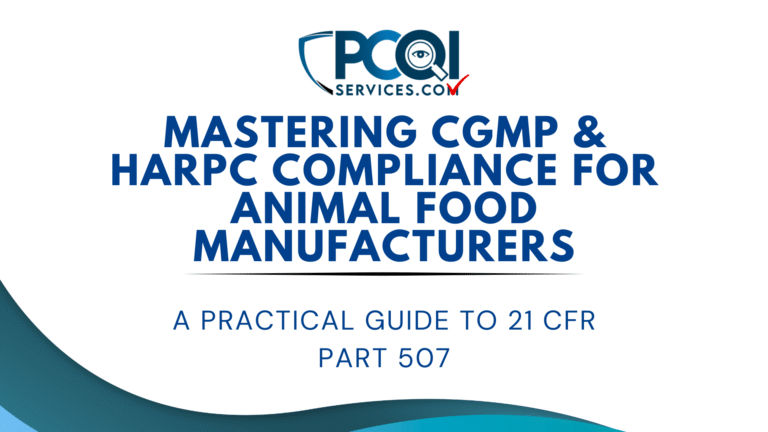Mastering cGMP & HARPC Compliance for Animal Food Manufacturers: A Practical Guide to 21 CFR Part 507
Animal food safety is a critical concern, not just for regulatory compliance but also for protecting animal health and the integrity of the supply chain. In the United States, the FDA enforces 21 CFR Part 507, which sets forth the Current Good Manufacturing Practice (cGMP) and Hazard Analysis and Risk-Based Preventive Controls (HARPC) requirements for animal food. Compliance with these regulations is mandatory for manufacturers, packers, and distributors of animal food.
Understanding 21 CFR Part 507
The rule has two primary components:
1. Subpart B – cGMP Requirements
These are baseline sanitation and process controls that help ensure safe and hygienic conditions in manufacturing, packaging, and storage facilities. Key requirements include:
- • Proper maintenance of buildings and equipment
- • Employee hygiene training
- • Prevention of contamination and allergen cross-contact
- • Adequate pest control and sanitation procedures
2. Subpart C & E – HARPC Requirements
HARPC requires facilities to identify known or reasonably foreseeable hazards and implement risk-based preventive controls. This includes:
- • Conducting a hazard analysis
- • Identifying preventive controls (e.g., process, sanitation, supply-chain)
- • Monitoring, corrective actions, and verification activities
- • A written food safety plan, maintained by a Preventive Controls Qualified Individual (PCQI)
Why Compliance Matters
Non-compliance can lead to:
- • FDA Warning Letters
- • Import detentions and recalls
- • Damage to brand reputation
- • Animal illness or harm
How PCQIServices.com Can Help
To simplify compliance, PCQIServices.com offers a cGMP & HARPC SOP Template Package specifically designed for animal food operations. Our documentation set includes:
- • Editable Standard Operating Procedures (SOPs) for cGMP compliance
- • Templates for conducting hazard analysis and establishing preventive controls
- • Record-keeping logs for monitoring and verification
- • Audit readiness tools to support FDA inspections
Conclusion
Achieving cGMP and HARPC compliance may seem complex, but with the right tools and support, animal food companies can build strong, sustainable food safety systems. Whether you’re preparing for an FDA inspection or building your documentation from scratch, start with structured SOPs and a solid compliance foundation.
Explore the full compliance template package at PCQIServices.com and ensure your facility is ready for anything the FDA throws your way.







